Past and Present: Decades of Change for Fort Greene’s Cumberland Street Hospital
A look at Brooklyn, then and now. As much as Brooklyn has changed and improved over the last 200 years, one thing has not changed for the better — the number of health care facilities. In Brooklyn’s prime as an independent city, during the last two decades of the 19th century, the city was filled…
A look at Brooklyn, then and now.
As much as Brooklyn has changed and improved over the last 200 years, one thing has not changed for the better — the number of health care facilities.
In Brooklyn’s prime as an independent city, during the last two decades of the 19th century, the city was filled with all kinds of hospitals, sanitariums, clinics and dispensaries, both public and private. Today, only a handful remain.
Those who were well off enough to have private medical care could always depend on a doctor’s house call, or a visit to his practice. Most of Brooklyn’s doctors could be called upon in emergencies, but there were very few hospitals and very few hospital beds.
The poor had to rely on the charity of individual doctors, or their services in a small number of charitably run dispensaries — clinics that took care of basic medical needs, emergency operations, and dispensed medicines at low or no cost.
City government didn’t address the needs of the poor until a growing awareness of public health opened their eyes. It took a lack of hospital beds for such random emergencies as traffic accidents to help even the most jaded and tight-fisted realize that more needed to be done for the public good.
1873 ambulance. Photo via Coney Island EMS
In Fort Greene, money donated by manufacturers Augustus and John Graham helped jumpstart Brooklyn Hospital, the city’s first public hospital. Augustus Graham, the principle donor, donated enough money in 1846 for the city to buy a small frame house that opened as the Brooklyn City Dispensary in 1847.
It was a noble start, but from the beginning was too small. Major surgery had to take place with other patients in the room, as there was nowhere else to put them. In the days before decent anesthesia, that must have been something.
Graham died in 1847, but left a great deal of money to be put towards a real hospital. They broke ground in 1851 for Brooklyn City Hospital, built on the edge of Fort Greene Park, where it still stands today.
Nearby, another facility joined Brooklyn Hospital to provide health care to the area’s poor.
Brooklyn Homeopathic Hospital in 1902. Photo via Harvard University
It started out as the Brooklyn Homeopathic Dispensary in 1852, and became the Homeopathic Hospital on Cumberland Street in 1872 — in a building formerly known as the Cumberland Street Orphan Asylum. The architects were Fowler & Hough, best known for their design of the 23rd Regiment Armory, on the corner of Bedford and Atlantic Avenues.
Although homeopathic medicine is regarded as a New Agey “alternative” treatment now, it gained great popularity in the mid to late 19th century. In theory, homeopathy is based on the idea that “like cures like” — that a substance which would cause symptoms if given to a healthy person could be used to cure the same symptom if the person was ill.
There were many homeopathic health practitioners in Brooklyn at this time, as well as traditional doctors. Since medicine was still finding itself back then, many homeopathic cures and practices worked as well as — or better — than traditional medicine.
It seems that the Homeopathic Hospital drew both kinds of doctors to its doors, and the hospital grew. The papers are full of fund raisers by everyone from society matrons to orphan girl’s choirs. It was a charitable hospital, taking patients regardless of their ability to pay.
The papers were also full of the patients who were taken there. Homeopathic Hospital became a busy emergency room for those hit by wagons and trains, crime victims and accident victims.
In spite of its good works and fundraising, it also racked up a lot of debt. By 1900, the Homeopathic Hospital was on the verge of going under.
The city of New York decided to take over the hospital and its debt. It came under the auspices of the Department of Public Charity. In 1901, the hospital closed down and was renovated inside and out.
1901 photo, Brooklyn Public Library
The building, as shown in the “Past” photo, was completely renovated in 1902. The photograph is from the year before. The address was 105-111 Cumberland Street, and the photo shows a four story building with attic space, next door to the Cumberland Street Presbyterian Church on its left.
Children’s Ward, 1902 building. Photo via NYC Department of Records
A look at the 1904 map shows the hospital took up the depth of the entire block on one wing, and had a crematory and laundry behind the main building.
This photograph was originally from the Brooklyn Eagle, which ran it in a story about the hospital’s re-opening, now a city hospital, ready to serve Brooklyn with a dedicated staff of physicians, surgeons and nurses.
1904 map, New York Public Library
In 1922, the name of the hospital was officially changed to Cumberland Hospital.
In 1918, the Fowler & Hough building was torn down, and a massive new nine story hospital rose in its place nearby. More additions were added well into the 1950s.
Over the years, the Cumberland Hospital was quite busy, and some of the patients that passed through its doors were well known, including several notorious criminals.
1918 rebuilding. Photo via NYC Department of Records
Hospital under construction. Photo via Brooklyn Public Library
Unfortunately, the hospital was right in the middle of an area that the city wanted to tear down and rebuild as low-income housing projects. Robert Moses was in charge of the initiative. There would be two sets of housing projects, only blocks from each other. Cumberland Street was in the middle of what would become the Walt Whitman Houses.
Two full city blocks between North Portland and Carlton Streets, between Park and Myrtle Avenues were razed. Cumberland and North Oxford Streets, between Park and Myrtle were de-mapped and destroyed. Rows of wood-framed and masonry homes and businesses were torn down, leaving only Cumberland St. Hospital, Public School No. 67, and the City Park branch of Brooklyn Library, one of the Carnegie Libraries.
1904 map of now de-mapped streets. New York Public Library
The Walt Whitman Houses were built in their stead, finished in February of 1944. Nearby, the Raymond V. Ingersoll Houses were finished about the same time. Both make up what is called the Fort Greene Housing projects.
Robert Moses also spared St. Edward’s Catholic Church, which the Brooklyn Eagle described as a church “standing majestically amid ruins from soon will arise the bright walls of the Fort Greene Housing Project.” Cumberland Hospital still stands high amidst the project’s buildings.
Cumberland Hospital, 1947. Photo via NYC Department of Records
Today, the name lives on in the Cumberland Diagnostic Treatment Center at Brooklyn Hospital at 35 Auburn Place. The 1918 building now has a modern new addition and new signage.
Walt Whitman Houses. Photo by Nicholas Strini for PropertyShark
Walt Whitman Houses. Photo by Scott Bintner for PropertyShark
Cumberland Diagnostic and Treatment Center. Photo via nyc.gov

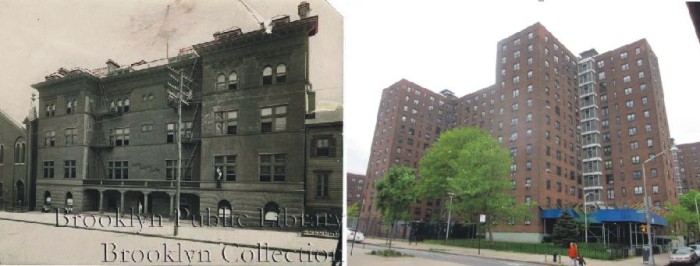
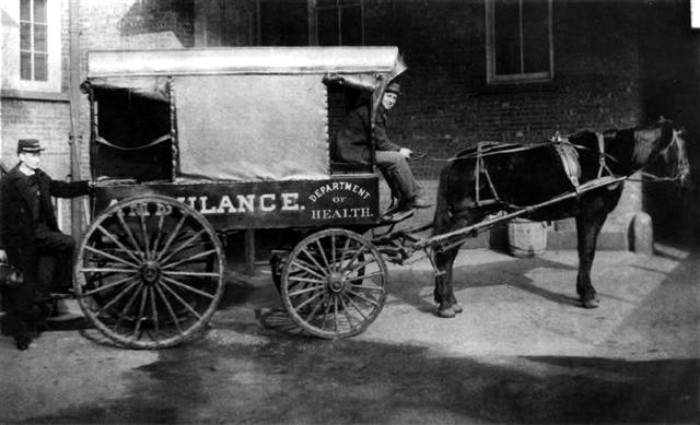


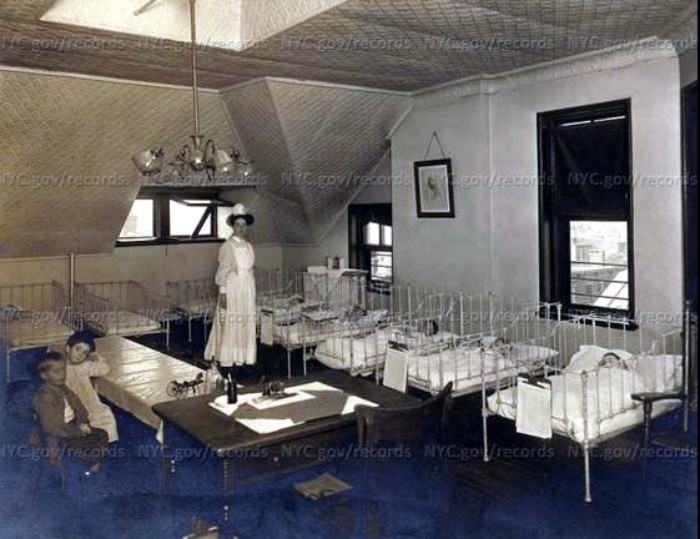
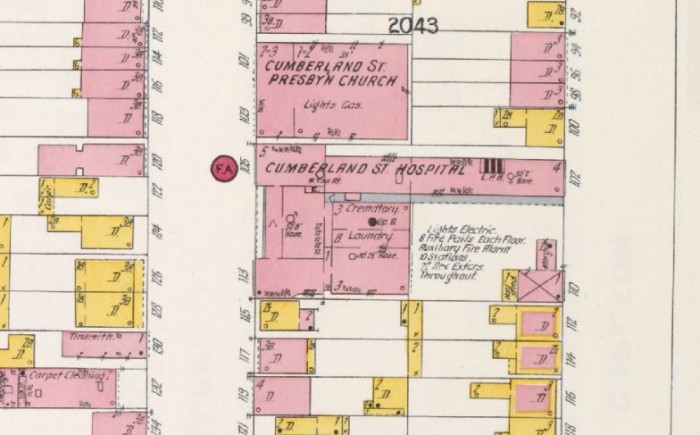
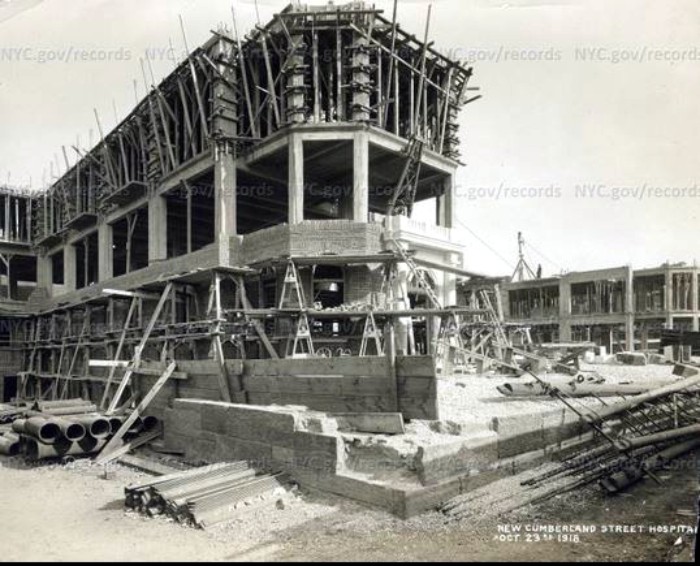
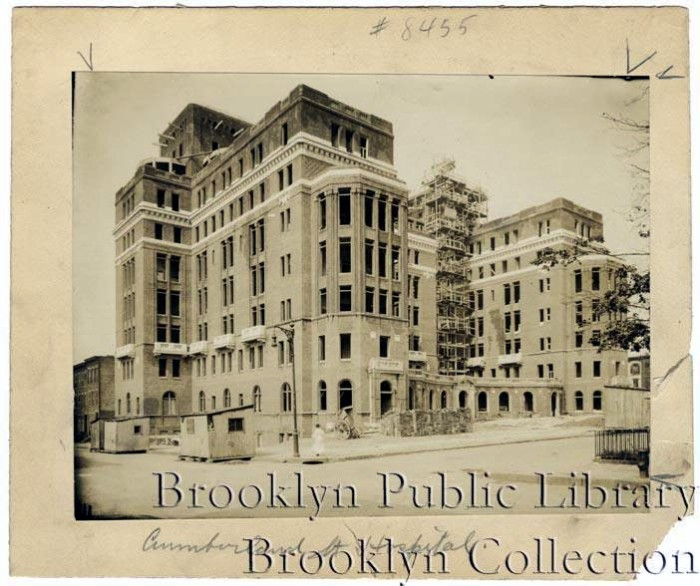
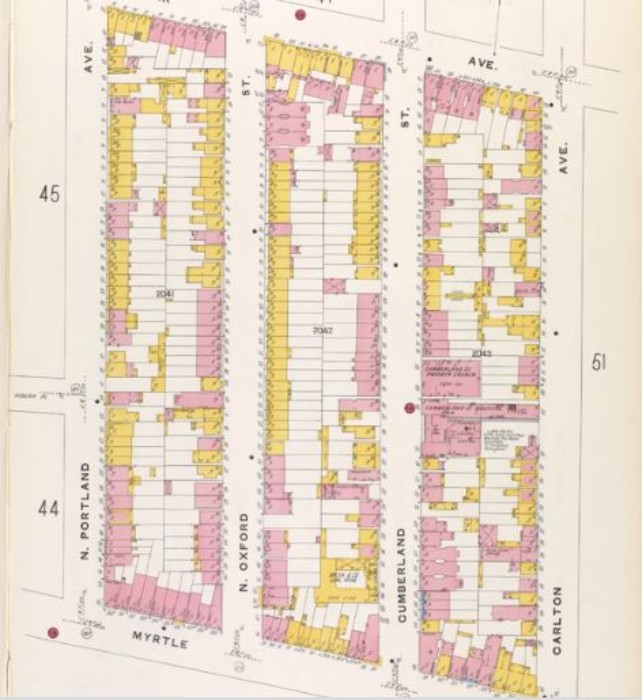
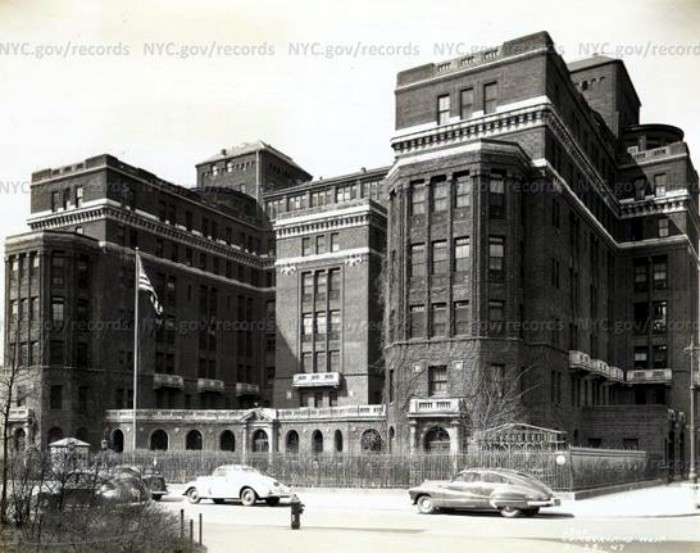
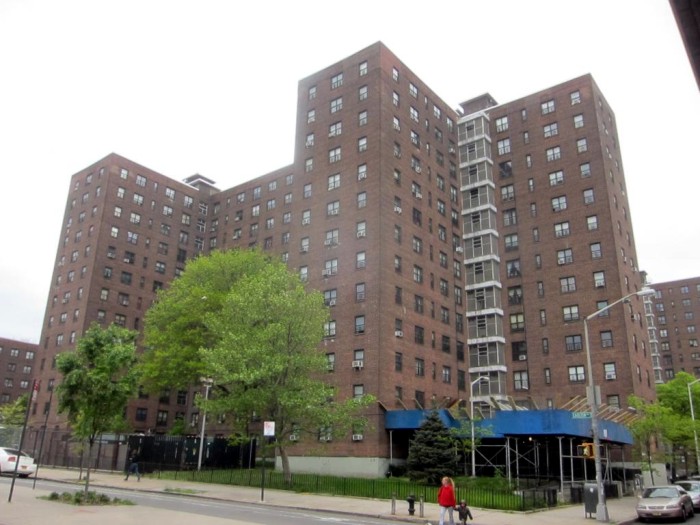
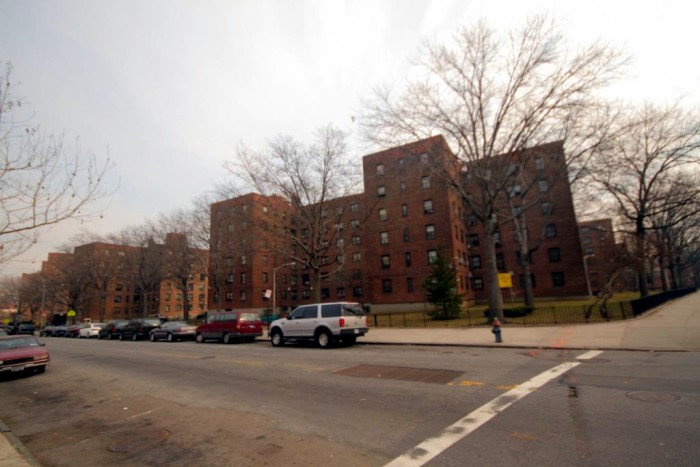
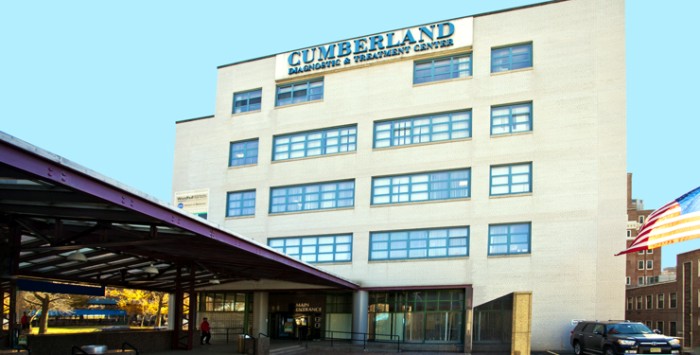








I am looking for information about Cumberland School of Nursing, which I understood was in the hospital, or adjacent to it. Where can I get more information?
The Auburn Pl side of the Cumberland Diagnostic Center appears to be the original Cumberland Hospital. Using both 1980s tax photos and streetmap you can clearly see it is very similar in appearance to the historical photos.